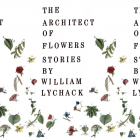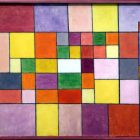Dancing with Myself
Anyone who has had a dance party alone in their room can attest to the helpfulness of an impromptu hoe-down. In her textbook Writing Fiction, Janet Burroway advises writers struggling with revision to “worry it and walk away,” but sometimes you need to dance away. The play involved might not immediately solve the craft problem at hand or lead to a fully formed piece of writing, but it certainly helps open the unconscious mind and loosen the “creative juices,” so to speak.
But dance, as a writing prompt, can offer more than that. I learned a lot about composition, story, and the creative process from dance. In a workshop on choreography in 2005, I was encouraged to think of a dance I was creating as having three acts, each act unified by a variant of a common gesture. How that gesture varied from act to act told a story.
In this case, it was a solo that suggested a partner dance. The movement changed from precise and muscular to buoyant and feathery to frenzied, staccato. It was essentially ABA structure: the “conclusion is recognizable but somehow changed in order to bring the piece to its resolution. There is a cyclic feel, a sense of continuity, order and inevitability.” My writing was often a formless blob at the time, so having this instruction, and actually dancing it, taught me form and structure in a visceral way.
And what about content? Certainly, many traditional dances embody old tales, rich sources of inspiration in and of themselves. It might seem convoluted to translate The Nutcracker from a ballet back into a story in a new way. But it’s not impossible; as with just about anything, it’s all about the execution. Adapting contemporary dance to prose or poetry can be a source of fresh material regardless of whether you danced it or sat in the audience.
If you adapted a dance to writing, what would you have to do? How does the dance become a story? How does its spirit translate to imagery, style? Towles Kintz, in an article in The Writer’s Chronicle, argues that “dance, of all the arts, [is] a more facile form for writers to emulate. Dance is an art form bound by verbs and grounded in the solid force of physicality.” The active verb reigns.
Of course, you might also look to the lives of dancers as Maggie Shipstead has done in her novel Astonish Me, or our perceptions of them, as Ellen Litman does in her short story “Dancers.” You might even directly collaborate with dancers as does poet Laura Neuman.
The Prompts
1. If you are in the “worrying” part of your writing, trying to solve some revision problem, write for 10 minutes, asking your characters questions and having them ask you questions. If after 10 minutes you are blocked, put on a song and dance. After the song is through, put your butt back in your chair (or get on back to your standing desk) and write for another 10 minutes. Repeat as necessary. (via StoryDam)
2. Go to a dance performance. Convert what you experience to writing. You might not want to take copious notes (or any notes) during the performance. Enjoy it for what it is and write afterwards: story, character, tone, style, emotion, multisensory detail. Don’t feel as if you have to transcribe the piece. Use it as source material. (I’m all for getting away from the computer and experiencing live art. However, there are lots of videos of contemporary dance available on the internet, such this dance by the legendary Pina Bausch and this dance video database.)
3. Take an actual dance class. How does the physical experience inform your writing? Once, taking a modern dance class in Montreal, a dancer about two feet taller than everyone else in the room inspired what would become my first published short story, “Very Big Furniture”. Nothing about him appeared in the story. But the way he moved through the space, the way he was so much larger, how his heels somehow did not meet the floor comfortably, made me think of a small family inheriting furniture much too large for their lives.
4. Looking to revise a story or apply a new structure to it? Take a look at this Form & Structure page on the Making Dance website. Do one of the basic forms seem appropriate to your story’s raw material? Try rewriting within one of the forms. Heck, if you’re feeling ambitious, rewrite the story in each of the forms. This isn’t so much a logical, linear approach to writing as a crabwalk toward new ideas and finding satisfying, maybe unexpected structures.
Dance your little hearts out and report back!



